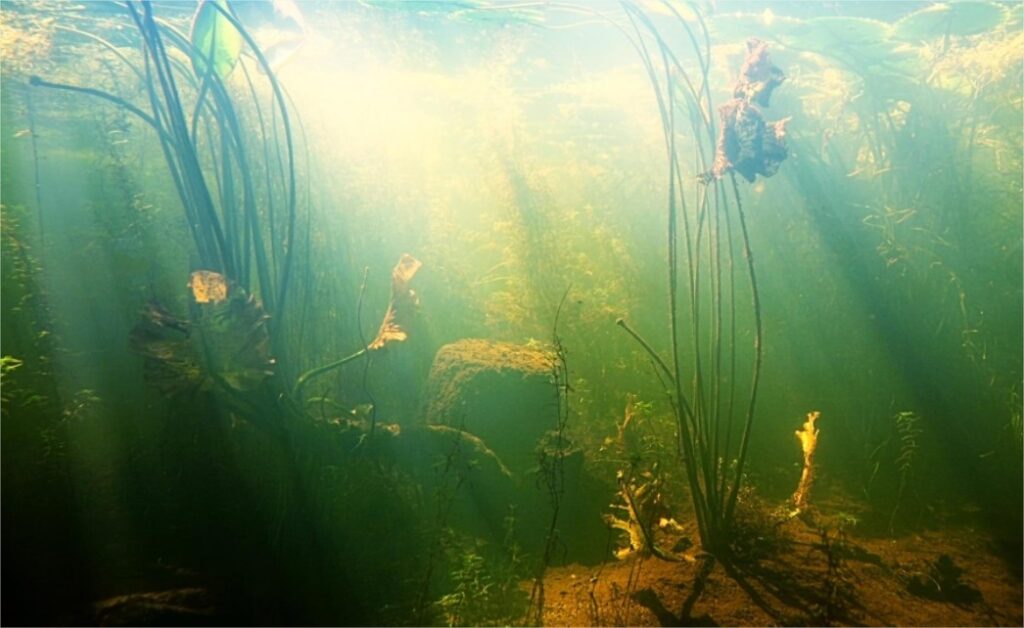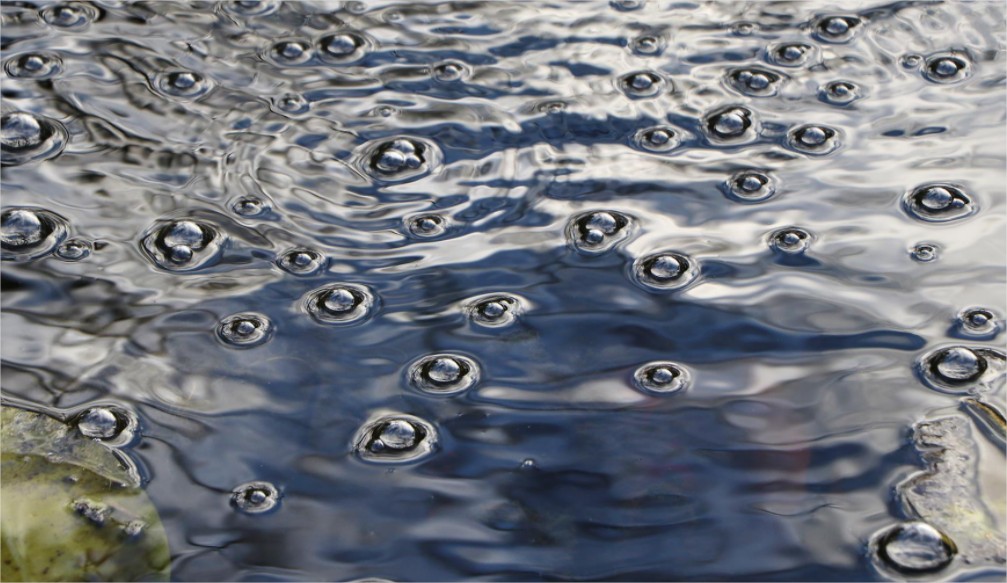Wondering how to get a pond clean without draining it? If so, you aren’t alone. In this article, I’m going to fill you in on some secret techniques that will give you a pond that is as clean as the dawn’s early light.
If you have a pond or water garden, then chances are you have needed to clean it at some point. Cleaning a pond can be a harrowing experience for those who are not aware of the right tools and knowledge available at their fingertips.
Cleaning a pond is a lot of hard work. It’s labor-intensive and requires many steps to complete correctly. You can drain the pond and put it back together, but that is not always an option. If you plan on keeping your pond I would recommend performing simple regular maintenance so you don’t have to do something like this in the future.
Guide To Clean a Pond Without Draining It
Draining a pond completely should always be a last resort, so it’s not something you should do if you want to clean it. The fact is, draining your water will actually make your pond dirtier down the road since the naturally sustaining ecosystem will be disturbed.
As long as you have the right equipment on hand, heavily draining water is rarely necessary when it comes to general cleaning.

To clean efficiently, do I have to drain the water from my pond?
Among some pond owners, the misconception exists that one must get rid of “dirty” water before cleaning can be completed. Water that appears dirty, however, can actually be very healthy, thanks to pond eco-systems that clean it naturally.
There are millions of micro-organisms and beneficial bacteria that could be present in pond water that are constantly destroying harmful substances, such as ammonia and nitrites. Fish ponds need these in order to maintain a balanced ecosystem, as they serve as the basis for the “nitrogen cycle”.
Why I Should Avoid While Cleaning?
- If you remove pond water, you will also be reducing your pond’s beneficial bacteria population. Also, it will affect the biological filtration process.
- In addition to draining a pond, topping it up with more water can cause further disruptions. As mains water is often high in chlorine, which is toxic to most natural micro-organisms.
- You will retain the natural bacteria populations in a pond after cleaning it without draining it, allowing your pond to continue to filter out waste.
- Once the waste levels become too high, you will simply need to remove enough waste to allow bacteria to start working again. No total drainage is necessary.

Is it necessary to change the water when I clean?
A partial pond water change (removal and addition of water) may be beneficial in some circumstances. But we never recommend a complete pond water change (drainage of the pond). As you will be resetting the nitrogen cycle.
Especially in summer, when fish metabolisms are high, maintaining water quality in a heavily dense pond is difficult. Fish produce a lot of waste, so it makes it harder to keep clean water.
It may be beneficial to perform a small water change to control ammonia levels during cleaning. In ponds with large amounts of waste buildup, beneficial bacteria can only do so much. Water changes can sometimes be a good option for maintaining water quality.
Things i should keep in mind…
- Water changes aren’t necessary for ponds without fish unless the water quality is especially low, which can be determined with a water testing kit.
- There should be no need to remove any water for routine cleaning, which includes bottom muck, algae, and floating debris.
- If your pond water testing comes back positive, removing water may result in a reduction in water quality. It will make it more difficult to maintain cleaner water in the future.
- If you do decide to undertake a water change, ensure sure the water has been safely dechlorinated before adding it to the pond. It can result in encountering problems later.
What Time I should Choose To clean My Pond?
Although cleaning can be done at any time, the optimal times for fish ponds are the beginning of spring and the end of fall.
Cleaning at the end of the season ensures that waste levels are kept to a minimum as the season progresses. Furthermore, allowing fish to have a more pleasant (and safe) torpor/hibernation phase.
Sludge and debris left in ponds over time can pose a variety of issues for fish, particularly if the water freezes over and no gas exchange can occur.
In such cases, dangerous compounds will gradually accumulate while oxygen levels fall. As a result, causing fish to become sick or die in the spring.
Fish keepers perform a deep clean toward the end of the season, and it’s something you should think about if you have koi or goldfish.

The Best Way to Clean a Pond Without Draining It (Effective Methods)
Step 1: Look for Floating Debris on the Surface.
Any floating surface material in a pond should be cleaned first, as it will eventually sink and contribute to sludge at the pond’s bottom.
If you don’t remove as much floating material as possible before washing the pond liner. Also, you’ll have to clean it again later as it settles.
Leaves, sticks, twigs, and dead insects or larvae are examples of floating detritus. These can be manually removed with a simple pond net. An automatic skimmer system can be used to keep the pond clean at all times.
If you choose a pond net, make sure it has a broad basket opening and fine mesh so you can easily catch all sizes of waste.
If you’re continually fighting back detritus that falls into your pond. Or if you have a lot of fish and want optimal water purity, pond skimmers are a fantastic long-term solution.
Box skimmers will swiftly clean the water surface and have a huge capacity for big ponds. Whilst floating or submerged skimmers will benefit smaller ponds due to their reduced purchasing cost.
Step 2) Use a vacuum to clean the pond’s floor.
The next step is to deal with any bottom sludge you may have; while you don’t have to get rid of it entirely. It’s a good idea to get rid of the majority of it before winter so your fish may enjoy a safer hibernating period.
Draining the pond may seem like a good idea at this point, but it’s only necessary if you’re manually removing sludge using a net or rake. Investing in a good water vacuum is another option to remove bottom sludge that is also faster and easier.
It is possible to vacuum your pond liner without having to drain water. The best models have numerous attachments for cleaning hard-to-reach areas.
Step 5) Clean and improve your water filtration system.
Finally, while cleaning a pond, make sure your water filtration is as good as it can be in order to minimize future cleaning and upkeep.
Water quality will be minimal in a pond with a good biological filtration system, and a filter with efficient mechanical media will minimize total trash in the pond.
Although cleaning filters isn’t recommended since it might harm germs in the box, it’s occasionally essential if the media is entirely blocked.
Mechanical media, on the other hand, can get damaged over time. Also, it needs to be replaced every few years to guarantee proper filtering.










